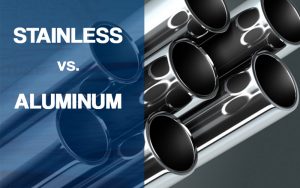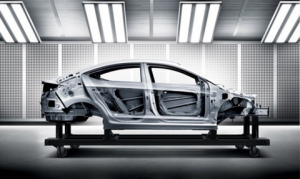
Steel Vs. Aluminum In Automotive Industry
In the manufacture of automobiles, the selection of the materials plays a significant role. In the past, automobiles were made up of pure steel works. In recent years, the body materials of automobiles are made up of steel, aluminum, plastics, and even wood. It is observed that here is a high demand for the use of aluminum in the manufacture of most of the automotive vehicles. In the automotive industry, there existed a competition in the choice of material for manufacturing cars or other vehicles. The following is a case study done by Brooklynz on the benefits of using steel and aluminum in the automotive industry. This case study would help people to understand which material is better for the manufacture of automobiles.
Light Weight Metal-Steel Vs. Aluminum
It is a well-known fact that iron is denser than aluminum. Thus aluminum is used in the manufacture of lightweight vehicles. Therefore popular automobile companies like Tesla and Ford make use of aluminum bodies to come up with lesser weight vehicles. The choice of material would indeed make a more significant difference in the weight and strength of the vehicle.

The tensile strength of steel is about four times that of the most durable aluminum alloys. Thus when using aluminum as a primary material for the manufacture of automobiles, it is important to increase its thickness. This would help to meet up safety standards as that of the high tensile steel.
It is possible to make use of lower mass aluminum, but the cost of the material is too high. The cost aluminum is about two to three times more than that of steel. Thus aluminum is the perfect lightweight material in the manufacture of cars, but it incurs more cost as the thickness must be increased for better tensile strength.
Safety Of Vehicle- Steel VS Aluminum
It is said that the higher energy absorption and large crush zones of aluminum-bodied vehicles make it safer than automobiles made up of steel materials. It is also to be noted that the design of the automobile mainly contributes to its safety and not the choice of materials. Scientifically speaking, one cannot conclude that aluminum is a safer material. The safety of the vehicle is attributed to the use of a combination of materials and the right design of the automobile.
The recent models of higher-end and luxury cars made up of aluminum bodies have been offered with a five-star rating for its safety. The entire design and working of these cars are modified so that it can perform better with the aluminum body. Thus the use of aluminum is safe, but it is a bit expensive.
Sustainability –Steel Vs. Aluminum
It is a known fact that steel can be recycled easily, and the process of recycling is simple. The alloys of steel can be melted and mixed. The ferrous property of steel makes it easy for scrapyard sorting. Recycling aluminum is not that easy, and you have to make use of advanced processes for the same. Also, there is a need to separate the various grades of aluminum metal before the melting process.

Who Wins The Light Weight Cars Battle?
The automotive industry is looking for ways to reduce the weight of vehicles so that it can meet out the latest emission standards. Aluminum and steel would be dominant materials in the future for the manufacture of lightweight automobiles. However, in the long run, it is expected that the use of multi-material mix combining various steels, aluminum, carbon fiber, and mild steel would increase. This would gain popularity as it would satisfy weight, performance, and cost requirements. It is also expected that there would be a demand in the use of aluminum for larger vehicles like SUV, trucks, and the use of AHSS steels for smaller cars. Check Out – about the comparison of aluminium and steel cars.
The above case study on the use of aluminum and steel as the manufacturing material of automobile would help to understand its features.





